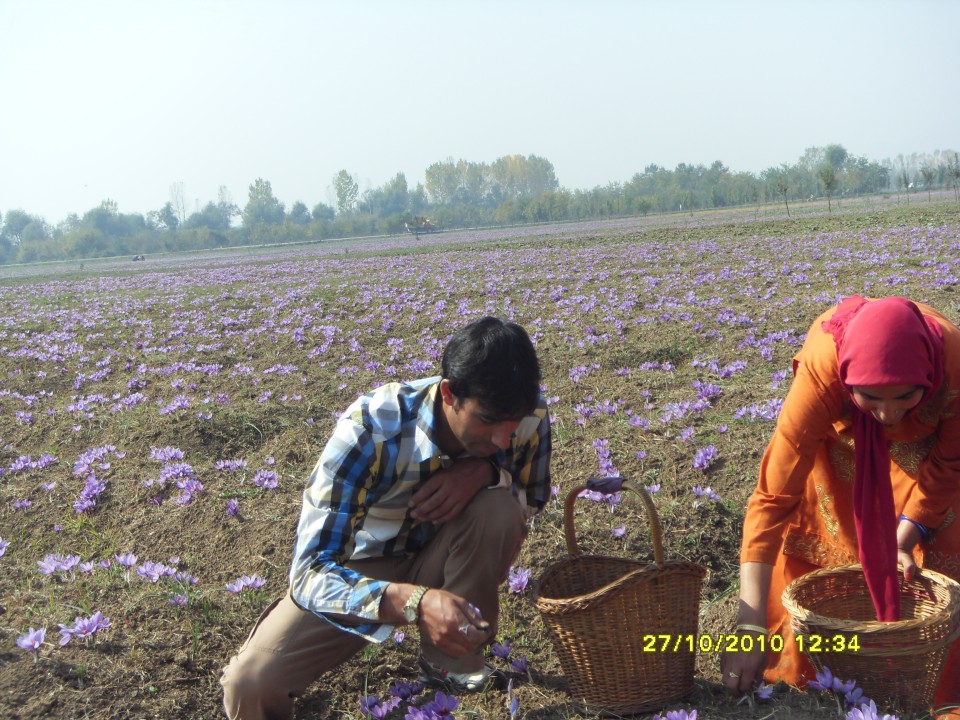Kashmir, nestled in the lap of the Himalayas, is renowned for its breathtaking landscapes, rich traditions, and vibrant cultural heritage. Among the many treasures that adorn this land, one holds a special place – Kashmiri saffron. Beyond its culinary and medicinal uses, saffron carries profound cultural significance in Kashmir. In this blog post, we will delve into the symbolism and celebrations associated with saffron in the beautiful valley of Kashmir.
A Legacy of Royalty:
Kashmiri saffron’s cultural importance can be traced back centuries. Historically, saffron was revered as a symbol of wealth and luxury, associated with the royal families of Kashmir. The saffron fields, known as “zafran kothar,” represented opulence and power, and the spice itself became an integral part of the region’s cultural identity.
Spiritual Connotations:
In addition to its material significance, saffron holds spiritual connotations in Kashmiri culture. The vibrant reddish-orange hue of saffron symbolizes purity, divinity, and spirituality. It is often associated with the rising sun, representing a new beginning and the renewal of life. Saffron’s essence is believed to possess mystical qualities that uplift the spirit and bring joy.
Festivals and Celebrations:
Saffron plays a central role in various festivals and celebrations in Kashmir. One such festival is “Kesar Purnima” or “Saffron Full Moon.” Celebrated during the full moon in the autumn season, this festival marks the end of the saffron harvest. Farmers gather to offer prayers and express gratitude for the bountiful yield. The celebration includes traditional dances, music, and feasting, with saffron-infused dishes taking center stage.
Saffron in Kashmiri Cuisine:
Kashmiri cuisine is renowned for its aromatic flavors, and saffron is an indispensable ingredient in many traditional dishes. Whether it’s the iconic saffron-infused Kashmiri pulao, the delectable saffron-infused desserts like phirni and kahwa, or the famous saffron tea, the spice adds a unique flavor and a golden touch to the culinary delights of the region.
Saffron’s Artistic Influence:
Beyond its use in cuisine, saffron has inspired various art forms in Kashmir. Traditional Kashmiri handicrafts like Pashmina shawls and silk carpets often feature intricate saffron-hued motifs, symbolizing elegance, grace, and heritage. These artistic expressions highlight the deep-rooted cultural significance of saffron in the region.
Saffron Tourism and Experiences:
Saffron cultivation has become a significant attraction for tourists visiting Kashmir. Many farms and gardens offer visitors the opportunity to witness the saffron cultivation process firsthand, from the delicate handpicking of saffron threads to learning about the age-old techniques passed down through generations. This immersive experience allows visitors to appreciate the cultural heritage and the painstaking efforts involved in producing the finest Kashmiri saffron.
Conclusion: Saffron’s cultural significance in Kashmir extends far beyond its culinary uses. It is a symbol of prosperity, spirituality, and the region’s rich cultural heritage. From its association with royalty to its integral role in festivals and celebrations, saffron weaves a golden thread throughout the cultural tapestry of Kashmir. As we embrace the beauty and traditions of this magnificent spice, let us also recognize the dedication and craftsmanship of the farmers who continue to cultivate and preserve the legacy of Kashmiri saffron for generations to come.
